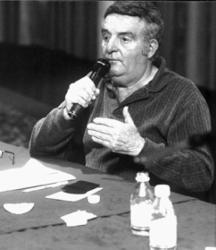 |
Мария Каэтана де Сильва Де Альба13-я герцогиня Альба
Дата рождения: 10.06.1762
Страна:  Испания Испания |
Биография Марии Каэтаны де Сильва Де Альба
Maria Cayetana de Silva, the future Duchess of Alba, was married off at the age of thirteen to a man six years her senior. However, she soon realized that she had made a mistake in her choice. By the age of twenty, Cayetana became the most famous woman in Spain, and her behavior often sparked heated debates. She enjoyed playing cruel pranks on family and acquaintances, such as pretending to be a poor girl and tricking a seminarian into a restaurant, where he couldn't afford to pay the bill.
Despite her extravagant and sometimes outrageous behavior, the people sympathized with her. Her father, the Duke of Jose Alvarez de Toledo Alba, was a supporter of progressive reforms and Enlightenment thinkers like Voltaire. These ideas were also embraced by Cayetana, who dedicated herself to philanthropy and helping the less fortunate. However, she was hated by Queen Maria Luisa, who banished her from Madrid for three years.
Cayetana had many admirers, including the renowned artist Francisco Goya. He immortalized her in several of his works, capturing her beauty and unique character, which was marked by capriciousness and independence. One of the most famous portraits of Cayetana was painted in 1795, shortly before her husband's death. After becoming a widow in 1796, the Duchess withdrew to one of her estates, where Goya was a frequent guest. It is believed that he depicted himself alongside Cayetana in a genre painting of a gentleman and lady on a stroll.
Goya also created intimate drawings of the Duchess during their time together. One of the most notable depicts Cayetana with a young black girl sitting on her lap, whom she had bought as a slave. Although she cared for the girl, she treated her as an exotic object of domesticity.
Cayetana allowed Goya to paint her in the nude, which was scandalous in the prudish Spain of that time. The paintings "Clothed Maja" and "Nude Maja" sparked numerous debates and speculation about the identity of the model. Some doubted that it was Cayetana, while others suggested that it was a revenge by a rejected artist, depicting another woman with her features.
There is no doubt that Cayetana occupied a special place in Goya's heart. He loved her passionately, as evidenced by his own words in a letter to a friend. However, there were also those who opposed the idea of a romantic relationship between them. Alexander Benois, an artist and art historian, suggested that the "Majas" portrayed one of Goya's many lovers. This theory emerged before the discovery of a portrait of Cayetana in traditional Spanish attire, with inscriptions of both "Alba" and "Goya" on her rings.
Unfortunately, happiness, even if fleeting, does not last forever. Cayetana fell ill and died in 1801, possibly due to an illegal abortion. Her funeral was grand and attended by the entire city of Madrid. In her will, Cayetana demonstrated her eccentric nature by leaving large sums of money to people she barely knew, such as poor students, a deranged monk, a foundling, actors, and bullfighters. Surprisingly, she left only a simple ring to the renowned painter Francisco de Goya, and a small annuity to his son Javier.





